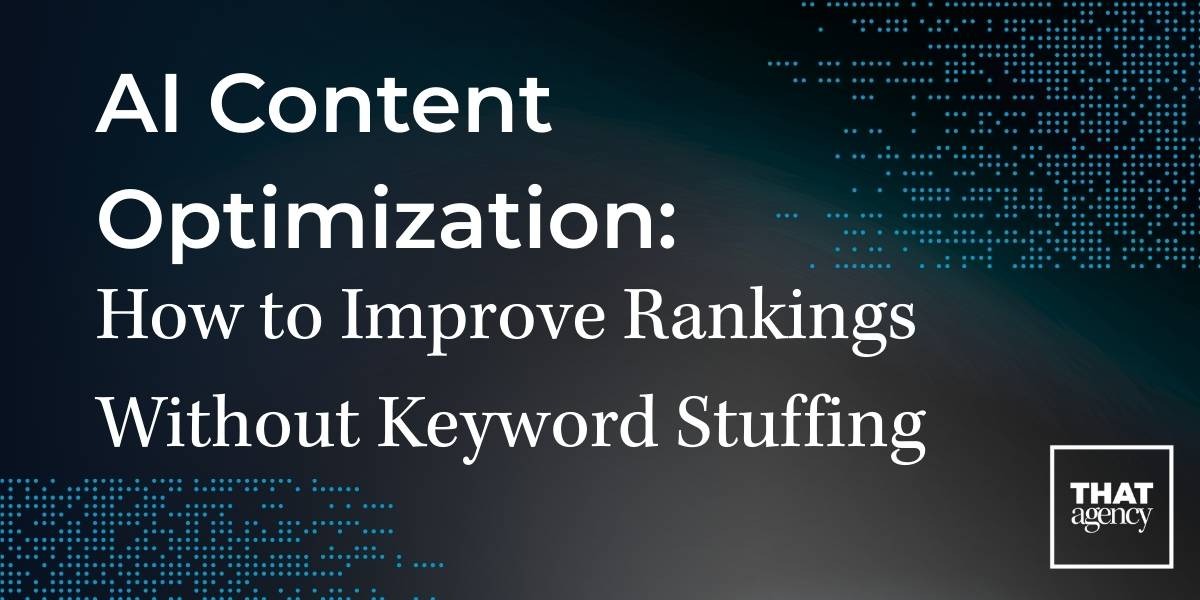Ever wondered if your blog posts should be long and detailed or short and snappy? You're not alone. Figuring out the perfect content length is a hot topic in digital marketing trends. Some swear by lengthy, in-depth articles, while others champion quick, concise updates. But which approach delivers better results for your SEO and marketing goals? In this post, we'll discuss the pros and cons of both long-form and short-form content. Plus, we'll reveal surprising findings from our case study on content length and SEO ranking. Let's find out what works!

Understanding Long-Form Content
Long-form content usually means articles, blog posts, or other written pieces that are over 1,200 words. These pieces go in-depth, covering a topic thoroughly. They aim to provide valuable information, insights, and solutions, often backed by research, data, and expert opinions For instance, a 2,000-word blog post analyzing the impact of climate change on coastal cities, complete with data, expert opinions, and actionable insights, would be considered long-form content.
Advantages of Long-Form Content
- Better SEO Performance: Long-form content can improve your SEO. Search engines prefer detailed and comprehensive content because it’s more likely to answer users' questions effectively. Using long-form content can help you rank higher on search engine results pages (SERPs).
- Increased Engagement and Time on Page: Readers tend to spend more time on long-form content. When visitors stay longer on your website, it tells search engines that your content is valuable and relevant, which can boost your rankings.
- Building Authority: Long-form content helps you establish yourself or your brand as an expert in your industry. By providing in-depth analysis and insights, you can build trust with your audience and position your brand as a thought leader.
- More Social Shares: Well-researched and comprehensive long-form content is more likely to be shared on social media. Readers are more inclined to share valuable content that offers in-depth knowledge, increasing your content’s reach and visibility.
Disadvantages of Long-Form Content
- Time-Consuming to Create: Producing high-quality long-form content takes a lot of time and effort. Researching, writing, and editing can be a lengthy process, which might be challenging for businesses with limited resources.
- Risk of Losing Reader Interest: If not written and structured well, long-form content can become overwhelming and lead to reader fatigue. It’s important to keep a balance between depth and readability to keep your audience engaged.
Exploring Short-Form Content
Short-form content, on the other hand, includes pieces that are typically under 1,000 words. Examples of short content include brief blog posts, news articles, social media updates, and short videos. Short-form content is ideal for readers looking for quick insights or updates.
Advantages of Short-Form Content
- Easier and Faster to Produce: Short-form content takes less time and effort to create, making it a good option for businesses with limited resources. This allows for more frequent publishing, keeping your audience engaged with fresh content.
- Better for Mobile Users: With more people using mobile devices, short-form content is more accessible for users on the go. It caters to mobile users who often look for quick, digestible information.
- Higher Frequency and Consistency: The ease of creating short-form content means you can update more frequently and maintain a consistent posting schedule. This consistency can help maintain audience interest and improve overall engagement.
Disadvantages of Short-Form Content
- Limited Depth and Value: Because it's brief, short-form content may not provide the same level of depth and value as long-form content. It might not fully address complex topics or answer detailed questions, potentially leaving readers wanting more.
- Lower SEO Potential: While short-form content can drive traffic and engagement, it might not have the same SEO potential as long-form content. Search engines often prioritize in-depth content that thoroughly covers a topic, which can make it harder for short-form content to rank as highly.
In summary, both long-form and short-form content have their strengths and weaknesses. Understanding your audience and your goals will help you decide which approach is best for your content strategy.
Case Study: Analyzing the Impact of Content-Length Across Industries
We conducted a detailed research study to determine which content length performs better. We tested the performance of long-form and short-form content across different fields. The results were eye-opening!
Research Findings

Case Study 1
Performance Metrics for Long-Form Content
- Total URL Clicks: 31
- Total Impressions: 35,153
- Average Position: 43.24
Performance Metrics for Short-Form Content
- Total URL Clicks: 15
- Total Impressions: 12,852
- Average Position: 60.4
Conclusion from Case Study 1:
The data reveals that long-form content generated more than double the number of URL clicks compared to short-form content. Specifically, long-form articles received 31 clicks, whereas short-form pieces only garnered 15. This suggests that readers are more likely to engage with detailed and comprehensive content.
Moreover, the impressions for long-form content were nearly three times higher, with long-form content achieving 35,153 impressions compared to just 12,852 for short-form content. This indicates that long-form content has a greater reach and is more likely to be seen by a larger audience.
Additionally, the average position on search engine results pages (SERPs) was significantly better for long-form content. Long-form content had an average position of 43.24, while short-form content lagged with an average position of 60.4. This demonstrates that search engines favor detailed, comprehensive content, which can lead to better rankings and increased visibility.
Insights and Implications
These results highlight the clear SEO benefits of long-form content in the digital marketing sector. The data shows the audience's preference for in-depth articles that provide extensive insights and valuable information. As a result, businesses aiming to improve their SEO performance and engage their audience more effectively should consider incorporating more long-form content into their strategy.
By focusing on creating detailed, comprehensive articles, businesses can not only boost their search engine rankings but also increase their reach and engagement. In the ever-evolving world of digital marketing, it’s clear that long-form content remains a powerful tool for capturing and retaining audience attention.

Case Study 2
Performance Metrics for Long-Form Content
- Total URL Clicks: 333
- Total Impressions: 89,678
- Average Position: 10.33
Performance Metrics for Short-Form Content
- Total URL Clicks: 14
- Total Impressions: 12,461
- Average Position: 38.63
Conclusion from Case Study 2:
The data demonstrates that long-form content achieved an impressive 333 URL clicks compared to just 14 for short-form content. This stark difference indicates that readers are much more engaged with detailed, in-depth articles.
Additionally, impressions for long-form content were significantly higher, reaching 89,678, while short-form content garnered only 12,461 impressions. This vast difference in visibility highlights the greater reach and potential audience that long-form content can attract.
Moreover, the average position on search engine results pages (SERPs) for long-form content was significantly better, with an average position of 10.33 compared to 38.63 for short-form content. This suggests that search engines favor long-form content, especially when the topic requires detailed and comprehensive information.
Insights and Implications
These results highlight the powerful impact of long-form content on SEO performance and user engagement. Long-form content not only attracts more clicks but also achieves higher visibility and better search engine rankings.
These findings show the importance of investing time and resources into creating comprehensive, in-depth content. While short-form content can be useful for quick updates or brief announcements, long-form content provides the depth and detail that consumers often seek when making informed decisions.
The data clearly shows that long-form content is a highly effective strategy for improving SEO performance and engaging audiences. Businesses aiming to enhance their online presence and connect more deeply with their audience should prioritize the creation of long-form, comprehensive content.

Case Study 3:
Performance Metrics for Long-Form Content
- Total URL Clicks: 78
- Total Impressions: 8,185
- Average Position: 17.46
Performance Metrics for Short-Form Content
- Total URL Clicks: 40
- Total Impressions: 7,938
- Average Position: 14.25
Conclusion from Case Study 3:
The data indicates that long-form content achieved more URL clicks and impressions than short-form content, with 78 clicks and 8,185 impressions compared to 40 clicks and 7,938 impressions, respectively. However, the margin was not as wide as in other studies, suggesting variability in performance based on audience and context.
Interestingly, the average position on search engine results pages (SERPs) for short-form content was slightly better, with an average position of 14.25 compared to 17.46 for long-form content. This implies that while long-form content generally attracts more engagement, short-form content can sometimes rank higher, depending on the specific audience's preferences and search behavior.
Insights and Implications
These results highlight that both long-form and short-form content have their merits and can perform well under different circumstances. Long-form content continues to demonstrate its value in driving more clicks and impressions, suggesting that detailed and comprehensive articles are often more engaging for readers.
However, the slightly better average position of short-form content in this study indicates that concise and to-the-point articles can also be effective, especially for audiences looking for quick, digestible information.
This highlights the importance of a balanced content strategy that incorporates both long-form and short-form content. By understanding your specific audience's preferences and tailoring your content length accordingly, you can maximize engagement and improve SEO performance.
Analysis of Findings
Our research indicates that long-form content consistently outperforms short-form content across different industries. Key observations include:
- Higher Engagement: Long-form content generated significantly more URL clicks and impressions across all case studies.
- Better SEO Performance: Long-form content consistently achieved better average positions on search engine results pages.
Overall, the case studies reveal that long-form content tends to generate higher engagement and visibility, making it a valuable strategy for improving SEO performance. However, the specific impact can vary depending on the audience and industry, suggesting that a balanced approach incorporating both long-form and short-form content may be most effective for meeting diverse user needs and optimizing overall content strategy.
Which Strategy Works Best for SEO?
When it comes to SEO, both long-form content and short-form content have their advantages. The best approach depends on your goals, audience preferences, and the type of content you're creating.
Long Form Content for SEO
Our findings show that long-form content is particularly effective for SEO due to its comprehensive nature. Here are some key benefits:
- Inclusion of Multiple Keywords: Long-form content allows for the natural inclusion of multiple keywords and phrases, increasing the chances of ranking for various search queries.
- Internal and External Linking: Long-form content provides more opportunities for internal and external linking, which boosts SEO performance.
- Attracting Backlinks: Detailed and valuable long-form content tends to attract more backlinks. Other websites are more likely to link to in-depth articles, which can enhance your domain authority and improve search rankings.
Short Form Content for SEO
While short-form content may not offer the same depth as long-form content, it still plays a crucial role in an effective SEO strategy. Here are some key points:
- Targeting Specific Keywords: Short-form content is ideal for targeting specific keywords and capturing the attention of mobile users.
- Quick Engagement: It drives quick engagement and can support larger content pieces, creating a well-rounded content marketing strategy.
- High Shareability: Short-form content is highly shareable, increasing the chances of social media engagement and driving traffic to your website.
Based on our research, both long-form and short-form content have their place in an SEO strategy. Long-form content tends to perform better in terms of engagement, impressions, and search rankings, thanks to its depth and comprehensive coverage. However, short-form content is also valuable for targeting specific keywords and engaging mobile users. A balanced approach that incorporates both types of content can help you meet diverse user needs and optimize your overall content strategy.
Conclusion
In the debate of long-form content vs short-form content, there is no one-size-fits-all answer. Both strategies have their advantages and can be effective when used appropriately. Long-form content is invaluable for SEO, authority building, and providing in-depth information. Short-form content excels in quick engagement, mobile accessibility, and frequent updates.
To maximize your content marketing efforts, consider integrating both long-form and short-form content into your strategy. By leveraging the strengths of each approach, you can cater to different audience preferences, enhance your SEO performance, and achieve your digital marketing goals.
For more insights on how to optimize your content strategy and improve your online presence, contact us at THAT Agency. Our team of experts is here to help you navigate the complexities of digital marketing and achieve your business objectives.




